
Dieffenbachia Plant Guide
Every house has one—a gloomy nook or a barren shelf that screams for some ornamental greenery. The ideal way to make an immediate effect in those bare places is with Dieffenbachia plants.
Dieffenbachia is a low-maintenance houseplant that gives any room a lush, tropical appearance. Dieffenbachia offers a variety of species with a wide range of eye-catching leaf patterns.
When you learn how to take care of a dieffenbachia plant, you'll discover that it can thrive in any environmental circumstances that you might not anticipate for a houseplant. They are an excellent pick for a novice or time-constrained plant owners.
Do you know to which region Dieffenbachia belongs?
Dieffenbachia is a genus of tropical flowering plants of the Araceae family, also known as a dumb cane or leopard lily. It is indigenous to the New World Tropics, which stretch south from Argentina to Mexico and the West Indies.

Dieffenbachia species
There are several lovely tropical perennials in the Dieffenbachia genus, but D. sequine, D. oerstedii, D. maculata, and D. amoena are the most often cultivated species. You can have difficulty with the specific nomenclature of several types of Dieffenbachia because several of the species have lately been given new names. They are commonly referred to as dieffenbachias or dumb canes as a group.
Among the many Dieffenbachia species, only a few are routinely purchased and sold in the marketplace:
The most well-known Dieffenbachia species, D. seguine, is endemic to Brazil and has clusters of broad, oval leaves with green borders that are speckled with yellow or cream. It has a ten-foot maximum height.
Dieffenbachia Camille
The big green leaves of the Dieffenbachia Camille indoor plant exhibit wide, creamy white colouration in the middle of its leaves, which are edged in dark green.
Dieffenbachia Amy
Dumb Cane Amy, also known as Dieffenbachia Amy, has light- to medium-green flecked leaves. Darker green tones provide a playful touch.
Dieffenbachia Amy knows how to stand out suitably without being flashy with its well-behaved, elliptical leaves and mixture of creamy white and green-patterned foliage.
Dieffenbachia Starbright
The wonderful decorative houseplant, Dieffenbachia Starbright has vivid variegated leaves that resemble a galaxy. Ideal plant for shaded areas in the yard or indoor spaces.
Dieffenbachia Tropic Mary
Dieffenbachia tropic mary is well known for its distinctive leaves, which have gorgeous green borders and a central blend of pearly creams and whites. This plant is a favourite choice for attractive corner pieces.
Dieffenbachia Sublime
Dieffenbachia 'Sublime' lives up to its name with the most exquisite variegated foliage, with the huge, luxuriant leaves speckled with rich green and cream. Every leaf is different and a piece of art! The leaves have a lovely camouflage-like appearance.

Dieffenbachia Delilah
Dieffenbachia 'Delilah' is a relatively unusual dumb cane with leaves that are 12 to 14 inches long by 6 to 8 inches wide, yet it stands out because of its vivid white centres and dark green splotches and edges. The plant is resistant to pests and illnesses because of its thick and waxy leaves.Dieffenbachia Green Magic
The grace and style of this audacious and self-assured Dieffenbachia will enhance your indoor design. The dark green leaves are divided by a noticeable white stripe.

Care for Dieffenbachia Plant
Indirect, bright sunlight is ideal for growing dieffenbachia indoors. It should be planted in peat-rich, fertile, well-drained potting soil. It thrives in settings of high humidity because it is a tropical plant. One method to do this is to set the pot on a pebble tray with water in it. During the dry winter months, misting the leaves can be beneficial.
Similar to many other indoor houseplants, this plant is prone to overwatering. Let the top 2 inches of the potting soil dry before providing the plant with good watering so that water may drain out of the bottom of the container. You have the choice of cutting the lower, weaker leaves as the plant grows to create a specimen that resembles a miniature palm tree with an arched canopy.
Light
This plant grows best in bright ambient light, but direct sunlight would scorch the leaves. Dieffenbachia also adapts fluorescent illumination in an office setting, though it can take some time.
Water
They enjoy receiving a lot of water, followed by some time alone to dry out. This is one houseplant that likely won't mind receiving regular watering.
Of course, you should always make adjustments based on the season and your own dumb cane's demands; for instance, you could anticipate watering more frequently in the summer and less frequently in the winter.
Soil
Use a well-drained, quick-draining potting mix. To prevent harming the roots, make sure the soil has sufficient drainage; they should never be left in wet soil.
Temperature
This plant prefers a temperature range of 65 to 75 ℉. If the temperature drops below 60 degrees or if it is exposed to chilly breezes, the plant is prone to lose its bottom leaves and take on a palm-like appearance.
Humidity
Dieffenbachias prefer moderate to high humidity levels, like the majority of tropical indoor plants. You may keep your plants moist in dry regions of the house by spraying the leaves, placing them on a tray with stones and water, or pairing your dieffenbachia with other houseplants.
Fertilizer
Indoor plants often thrive when fertilised from spring through fall. Feed plants periodically every four to six weeks with a balanced, diluted fertiliser, for optimal results. Follow the directions on the product packaging for how to use it. Nevertheless, some farmers firmly believe in the practice of applying a light, diluted fertiliser at each watering. Never add fertiliser to dry soil; always make sure the soil is moist.
Repotting
Often, dieffenbachias require replanting every year. Keep an eye out for any symptoms of stress on the plant, such as roots pushing through the soil, overcrowding, or wilting leaves, as these could indicate that it needs to be repotted. Repotting involves simply lifting the entire plant, removing any old soil and dead material from the roots, and setting it in a bigger container with more fresh soil. Give a dieffenbachia some time to become used to its new location after repotting. Put on gloves to prevent touching the sap.
Propagation
Dieffenbachia plants can be grown using one of three simple techniques.
By root division to divide:
Offsets can be divided (while keeping some roots intact) and planted in separate pots during the spring repotting process.
If you want to go this route, be careful not to disrupt the parent plant's root systems and use a sterilised tool to prevent the transmission of disease.
How to grow a stump:
The top of older, lanky dieffenbachias can be removed and potted with a rooting hormone in new potting soil.
The stump will begin to produce new leaves.
Remove the older leaves after the new ones have emerged.
To grow new cane through cuttings:
By placing cane fragments horizontally in moist potting soil, you can sprout them.
Benefits
Trying to find a unique plant to include in your home garden? Dieffenbachia can be exactly what you need! Both a medicinal herb and an aesthetic plant, this intriguing plant has a long history of use.
Discover why Dieffenbachia is so well-liked by indoor gardeners as you read on for more information about this plant's advantages. Leaves will eventually emerge as the pieces take root. Plant each rooted piece in its pot filled with fresh potting mix.
Cleans the Air
According to a study conducted, indoor air pollution may be as harmful as outdoor air pollution and contribute to migraines, motion sickness, and allergies. Dieffenbachia contributes to the purification of indoor air. According to a NASA study, Dieffenbachia is one of the plants that assists in removing dangerous pollutants from the air, including formaldehyde and benzene. Dieffenbachia will not only enhance the beauty of your home but also help keep you healthy by regulating the quality of the air within.
They Are Excellent Gifts
Dieffenbachias are wonderful presents for everyone who loves plants! Dieffenbachia is the ideal plant to present to someone you know who enjoys houseplants or is eager to start a collection. These plants will be well received by everyone who receives them due to their low maintenance needs and tropical appearance. Give them a potted Dieffenbachia that they can keep in their house all year long if you want to give them something extra special.
They offer a tropical vibe
Dieffenbachias are a wonderful way to bring a little bit of the tropics inside. These plants have the power to completely change an indoor area because of their huge leaves and lush growth.
With just a couple of plants, you can transform a plain and frigid guest room into a tropical retreat for visitors and family. No matter where you are—in the desert, the mountains, or right next to the sea—a flash of vibrant green from a Dieffenbachia is a terrific way to make any space come to life.
Best Plant for Absorbing CO2
We should also highlight that Dieffenbachia is one of the top CO2-absorbing indoor plants you can find when we're talking about keeping the air in your home pure. In a recent study, Dumb Cane faced off against six other indoor plants and emerged as the group's top CO2 absorber!
The plant is adaptable
Although native to Central and South America, Dieffenbachia amoena thrives in a variety of climatic conditions. In USDA zones 11 and 12, this plant thrives both indoors and outdoors, and it can also be cultivated as a houseplant in colder regions. As Dieffenbachia can tolerate both sunlight and shade, it is the perfect plant for indoor gardens that get both direct and indirect sunlight.
Are Dieffenbachia plants poisonous?
While it is true that dumb canes are poisonous, neither humans nor animals are typically gravely harmed by them. Every component of the plant contains countless microscopic calcium oxalate crystals in the shape of needles, and when some unfortunate animal (or person) eats it, they suffer from a painful and swollen mouth.
The common name "Dumb Cane" originated because in some cases the swelling is so severe that it renders the afflicted speechless due to their inability to speak. As a result, it may result in some undesirable side effects as well as considerable pain.
Avoid touching the sap, and if you do, wash it off quickly to avoid accidentally rubbing your eye or another regrettable area.
Common Pests
Dieffenbachia plants are generally trouble-free, however, they can be vulnerable to spider mites, like many indoor plants. You can use horticultural oil to cure these.
Common Dieffenbachia Problems
The dieffenbachia leaves will provide you with a lot of information about it. Watch for specific leaf colourations to learn what to do to alter the situation.
Turning-Yellow Leaves
Your plant's leaves may become yellow from either overwatering or underwatering. They frequently also tumble off the plant. To examine the soil, stick your finger into the bottom up to your first fingertip. Wait about a week before watering if it is moist. If the soil is excessively dry, you might need to dig a little deeper to determine whether you need to give the plant more water. Eliminate the yellow leaves for whatever reason.
Because the plant is short of some nutrients, such as nitrogen, the leaves may also become yellow. It won't harm to use a plant fertiliser to see if will revive your plant, even if this can be difficult to diagnose.
Soft and discoloured stem: stem rot condition
Most likely, you have been overwatering, which, when combined with the cold conditions, is frequently too much for the plant to handle.
If the damage is extensive, you will need to abandon the entire plant because rotting cannot be stopped once it has begun. You should remove the affected stems. If so, you can attempt to use the top portions as cuts.
Dumb Cane leaves that are pale or scorched
The leaves will resemble worn out in direct sunlight or extremely bright light as the plant strives to protect itself naturally from such harsh conditions.
Large portions of the leaf will turn nearly transparent or brown, ruining the appearance of the plant, if the bright light occurs quickly or for extended periods. Find the plant in a different, shadier location and trim the scorched area off the leaf or completely remove it.
Dieffenbachia's brown leaf edges
Overwatering is signalled by brown edges. Uncertainty in the edges is another sign of underwatering. By reflecting on how you've been taking care of the plant, you'll be able to identify which.
Keep in mind to water well, then wait until the soil has mostly dried up before watering again. Conditions that are constantly damp should be avoided. See the next section for another potential cause if the leaf tips are brown.

FAQ’s
What is the lifespan of a dieffenbachia houseplant?
Dieffenbachia houseplants can live for years if they are periodically potted up and refreshed as their leaves fall off.
How is Dieffenbachia maintained in good health?
The optimum soil for growing Dieffenbachia is not excessively wet Before giving the plant a deep soak at the root, wait till the top two inches of soil are dry completely. Droopy leaves typically mean that the plant needs to be watered.
Can Dieffenbachia flourish in water?
For such a big, thick-stemmed plant, Dieffenbachias will endure water-only cultivation remarkably well with the right care. They can live and produce lovely, robust foliage, but they often don't grow as quickly as they would if rooted in soil.
The dieffenbachia grows up to what size?
The majority of dieffenbachias will reach heights of 3 to 6 feet and widths of 1 to 3 feet. Each leaf can measure up to 18 inches long and 12 inches wide.
Dieffenbachia Plants Collection
-
Original price Rs. 349.00Original price Rs. 349.00 - Original price Rs. 349.00Original price Rs. 349.00Current price Rs. 249.00Rs. 249.00 - Rs. 249.00Current price Rs. 249.00
Dieffenbachia Camille Plant
Plant Profile: Our best-seller, Dieffenbachia Camille also known as Dumb Cane Camille is an easygoing plant that flaunts large, oval leaves with l...
View full detailsOriginal price Rs. 349.00Original price Rs. 349.00 - Original price Rs. 349.00Original price Rs. 349.00Current price Rs. 249.00Rs. 249.00 - Rs. 249.00Current price Rs. 249.00Sale -
Original price Rs. 349.00Original price Rs. 349.00 - Original price Rs. 349.00Original price Rs. 349.00Current price Rs. 249.00Rs. 249.00 - Rs. 249.00Current price Rs. 249.00
Dieffenbachia Amy Plant
Plant Profile: This is one of our best-selling plants from the Dieffenbachia family. The Dieffenbachia Amy aka Dumb Cane Amy is a tropical beauty t...
View full detailsOriginal price Rs. 349.00Original price Rs. 349.00 - Original price Rs. 349.00Original price Rs. 349.00Current price Rs. 249.00Rs. 249.00 - Rs. 249.00Current price Rs. 249.00Sale -
Original price Rs. 1,197.00Original price Rs. 1,197.00 - Original price Rs. 1,197.00Original price Rs. 1,197.00Current price Rs. 1,032.00Rs. 1,032.00 - Rs. 1,032.00Current price Rs. 1,032.00
3 Indoor Plant Pack - Peace lily, Snake Plant, Dieffenbachia
+Introducing our exclusive 3-in-1 Indoor Plant Assortment Pack - the perfect solution for a healthy and low-maintenance lifestyle! This money-saver...
View full detailsOriginal price Rs. 1,197.00Original price Rs. 1,197.00 - Original price Rs. 1,197.00Original price Rs. 1,197.00Current price Rs. 1,032.00Rs. 1,032.00 - Rs. 1,032.00Current price Rs. 1,032.00Sale -
Original price Rs. 349.00Original price Rs. 349.00 - Original price Rs. 349.00Original price Rs. 349.00Current price Rs. 249.00Rs. 249.00 - Rs. 249.00Current price Rs. 249.00
Dieffenbachia Sublime Plant
Plant Profile: Our customer's favorite for its bushy, fuller looks, Dieffenbachia Sublime is a true masterpiece in the world of houseplants! Its va...
View full detailsOriginal price Rs. 349.00Original price Rs. 349.00 - Original price Rs. 349.00Original price Rs. 349.00Current price Rs. 249.00Rs. 249.00 - Rs. 249.00Current price Rs. 249.00Sale -
Original price Rs. 349.00Original price Rs. 349.00 - Original price Rs. 349.00Original price Rs. 349.00Current price Rs. 249.00Rs. 249.00 - Rs. 249.00Current price Rs. 249.00
Dieffenbachia Starbright Yellow Plant
Plant Profile: Dieffenbachia Starbright is an evergreen tropical plant with long, pointed leaves. This dieffenbachia indoor plant is a low-maintena...
View full detailsOriginal price Rs. 349.00Original price Rs. 349.00 - Original price Rs. 349.00Original price Rs. 349.00Current price Rs. 249.00Rs. 249.00 - Rs. 249.00Current price Rs. 249.00Sale





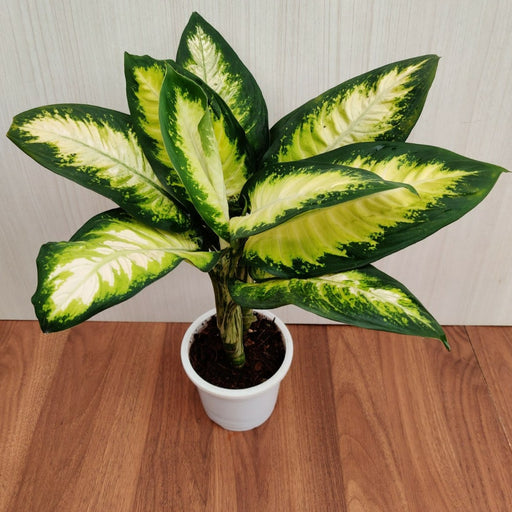
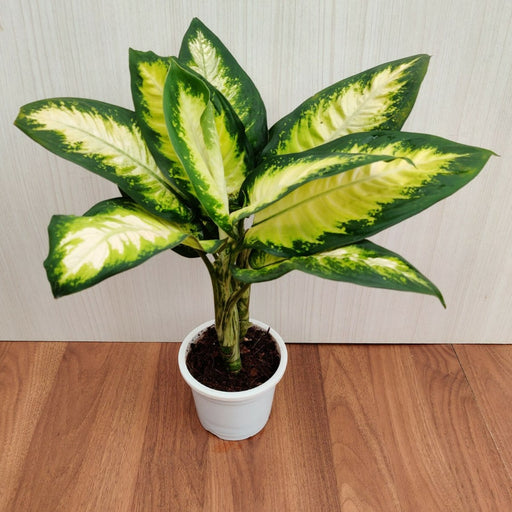
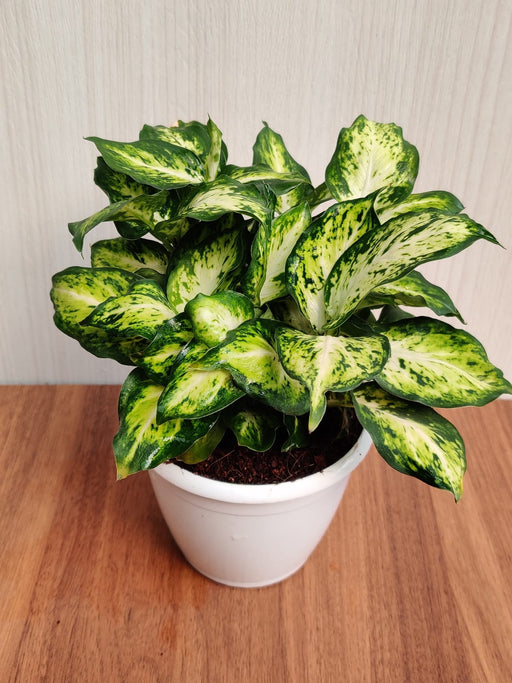
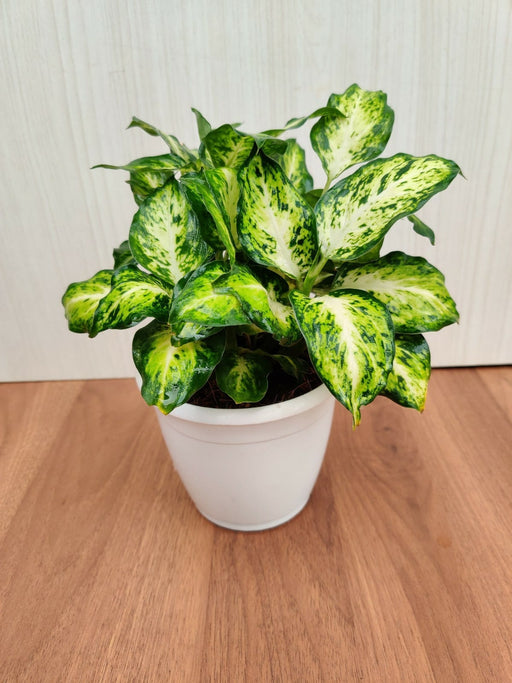
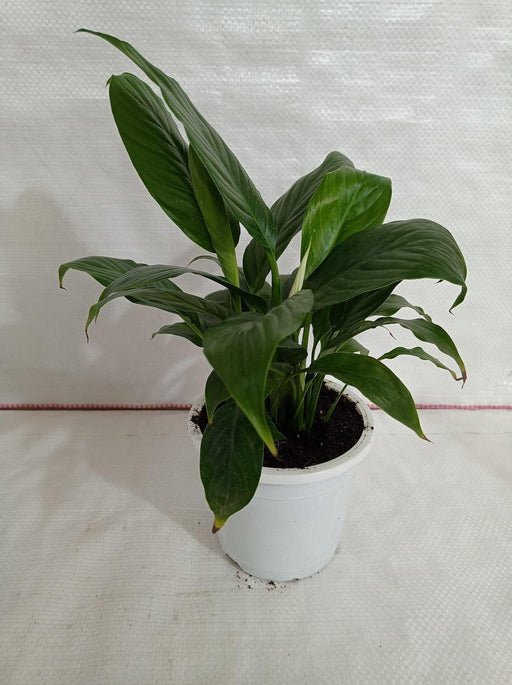
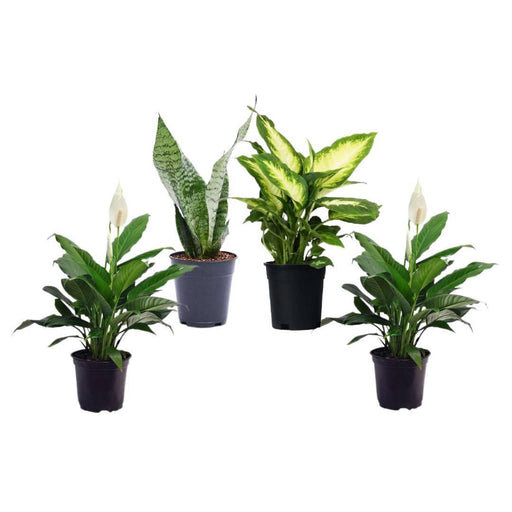
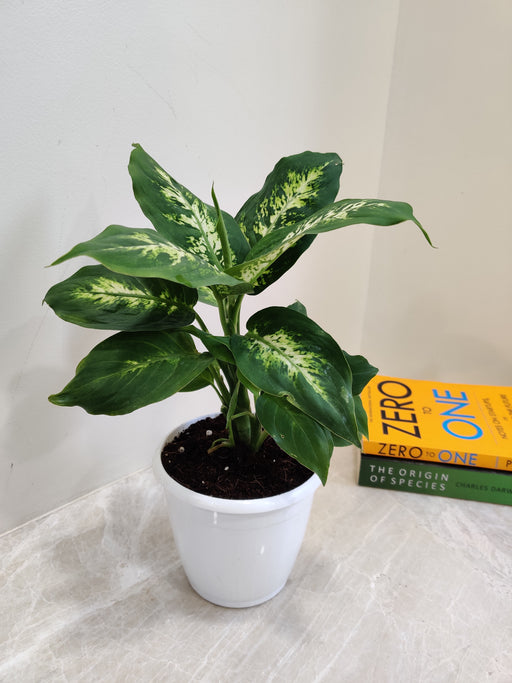
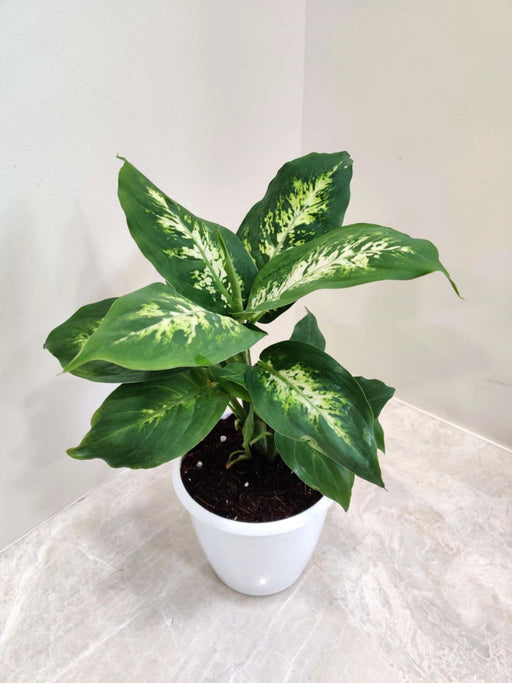
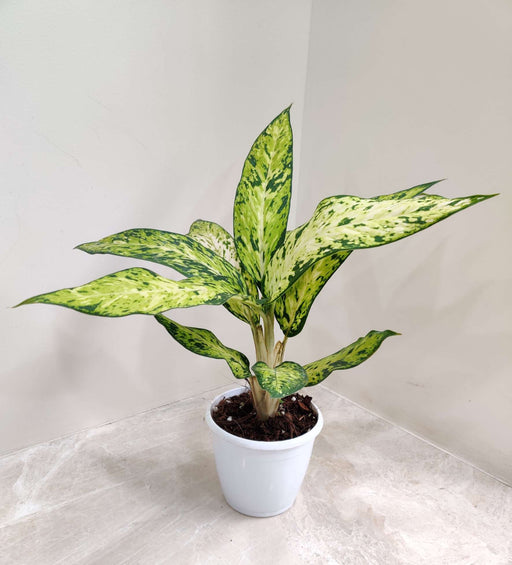
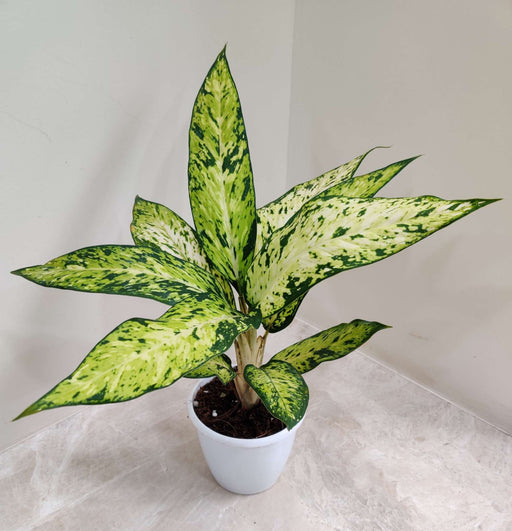
Leave a comment